- Home
- Philip K. Dick
The Demon at Agi Bridge and Other Japanese Tales (Translations from the Asian Classics) Page 2
The Demon at Agi Bridge and Other Japanese Tales (Translations from the Asian Classics) Read online
Page 2
Since one of the objectives of such setsuwa collections as the Konjaku monogatari shū of the late Heian period and Transmissions from Three Countries (Sangoku denki, early fifteenth century), edited by Gentō, was to provide an encyclopedic worldview—centered on India, China, and Japan—they gathered stories from these countries. Tales of China (Kara monogatari, ca. 1165), perhaps edited by Fujiwara no Shigenori (1135–1188), is a collection of adaptations, in the style of uta-monogatari (poem-tales), from Chinese texts such as Records of the Historian (Shiji, Jp. Shiki), Book of Han (Hanshu, Jp. Hansho), Meng qiu (Jp. Mōgyū),2 and Collected Works of Bo Juyi (Boshi wenji, Jp. Hakushi monjū). In Sangoku denki, from the Muromachi period (1392–1573), a Buddhist priest from India, a layperson from China, and a person from Japan tell stories about their respective countries. The Chinese had already translated parts of Buddhist scriptures and stories from Sanskrit into Chinese, and they were then transmitted to Japan. These translations from the Chinese were, in turn, orally narrated and written down again. The tales from India and China in the Konjaku monogatari shū had been circulated and narrated before being recorded and often differ significantly from their Chinese sources. Given the nature of setsuwa, which were not concerned with the notion of an authentic original text, these setsuwa are best regarded as free adaptations. Japanese knowledge of Chinese historical figures and legends as they appear in medieval gunki-mono (warrior tales), such as The Tales of the Heike (Heike monogatari, from mid-thirteenth century onward), was often derived from such setsuwa rather than from the original Chinese text or Confucian classic.
The language and style of the setsuwa are diverse. The first setsuwa collection, the Nihon ryōiki, was written in hentai kanbun (literally, “unorthodox Chinese”). The Konjaku monogatari shū was written in wakan-konkōbun, a compact and highly efficient Sino-Japanese style that mixes Chinese graphs with katakana, a Japanese syllabary associated with Buddhist writing. The Uji shūi monogatari uses hiragana, in a more classical style that draws on the court tale tradition. The Sangoku denki is written in kanbun (Chinese-style writing). These texts, which reveal a wide range of written styles, cannot be said to be direct recordings of oral performances.
In the Heian period, setsuwa were regarded by Buddhist priests as a means to spread Buddhism and make it accessible to an audience that could not read Buddhist scriptures. This partially accounts for the large number of Buddhist-centered setsuwa collections in the late Heian and early Kamakura (1183–1333) periods. The editors, such as those of the Konjaku monogatari shū, were interested in China and India not only because they wanted to present a world history but because Buddhism had spread from India through China to Japan. With the rise of Zen Buddhism in the Kamakura period and the emergence of Buddhist leaders such as Eisai (1141–1215), the Rinzai Zen leader, and Dōgen (1200–1253), the Sōtō Zen pioneer, who stressed enlightenment without words and beyond language, the Buddhist attitude toward setsuwa as a component of religious education changed, and setsuwa were sometimes banned as a tool for teaching.3
The setsuwa collections embrace a wide variety of topics—from poetry to violence to sex to humor—and their contents range from folktales about animals and plants to historical legends to myths about gods to accounts about everyday commoner life to stories of the supernatural. If there is a common denominator in this huge variety, it was the attempt by the editors to provide a comprehensive vision of the world and a means to survive in the world. The readers/listeners were expected to learn a “lesson” about some aspect of life. This is apparent in the predilection for didactic endings. The editor or writer/recorder gave each setsuwa a particular function. The same story may appear in one collection as a Buddhist setsuwa and in another collection as a secular setsuwa. The didactic endings are particularly prominent in the Buddhist collections, which were attempting to spread the Buddhist gospel or to stress the efficacy of the Lotus Sutra or the power of the bodhisattva Kannon (Avalokiteśvara). The setsuwa often end with what are now called kotowaza, or aphorisms that provide guidance in navigating life. For example, “On Receiving the Immediate Penalty of an Evil Death for Collecting Debts in an Unreasonable Manner and with High Interest” (Nihon ryōiki, 3:26) concludes with the phrase “Those who fail to repay debts that they owe will atone for this by becoming a horse or an ox.” An example of a modern aphorism is akuin akka (bad cause, bad results), which means something like “you reap what you sow” and which derives from the Buddhist notion of karmic retribution. The use of stories that have been heard or circulated for pedagogical purposes also was common in medieval zuihitsu (free-form essays), such as Priest Kenkō’s Essays in Idleness (Tsurezuregusa, 1329–1333), some of which closely resemble setsuwa collections.
Another major characteristic of setsuwa was that they were not confined to the world of the court and the aristocracy in the way that Heian court tales and classical poetry tended to be. Instead, setsuwa embraced a wide range of social groups, encompassing commoners, warriors, priests, and aristocrats. The Konjaku monogatari shū, compiled in the twelfth century, is one of the first collections that includes stories about warriors, who were emerging as a social class in the Heian period. These anthologies also explore the underworld of thieves, pirates, and social deviants. When compared with the early chronicles, such as the Chronicles of Japan (Nihon shoki, 720), or the late Heian, Kamakura, and Nanboku-chō (1336–1392) vernacular histories, such as the Ōkagami and The Clear Mirror (Masukagami, 1338–1376)—which focus on the imperial line, the Fujiwara regency, or retired emperors—the setsuwa collections offer a broad view of the underside of history.
The setsuwa collections also deal with the divine (gods), the supernatural (ghosts, demons, long-nosed tengu, and other otherworldly beings), and the world of dreams, which were thought to provide access to the other world, to those not immediately or physically accessible such as the spirits of the dead and gods. Significantly, the storytelling scenes in setsuwa are often set near or at a temple or shrine, where the narrators have implicitly close access to divine spirits. In a related fashion, the stories also provide access to the underworld of the erotic and sexual, which often manifested itself in the form of dreams, spirits, and the supernatural. In the Konjaku monogatari shū, for example, snakes, which appear in the earlier Nihon shoki as gods (such as the god of Mount Miwa), appear as evil serpents and often as phallic symbols. However, in contrast to Heian-period monogatari, such as The Tale of Genji, which admit to their fictionality, setsuwa present the narration as history, as a record of past events, even when these events are about the strange or the miraculous. In the medieval and Edo periods, setsuwa collections were generally considered to be a kind of historical record or a type of vernacular Buddhist writing (hōgo).
In terms of form, the setsuwa differ from court tales and military chronicles in their brevity, rarely extending beyond five or six pages. They tend to be action-oriented, plot-centered, externally descriptive, and compact, often focusing on a single event or a limited chain of events. The collections, by contrast, can be very large—such as the Konjaku monogatari shū, with over a thousand tales—have complex thematic structures, and attempt to be comprehensive and historical in coverage. Like the poems in a poetry anthology, the individual setsuwa thus can be read both independently and as part of a subgroup of a book (maki) or section, in which each story is a variation on a theme such as Kannon, humor, or demons. Within each book, furthermore, successive tales are often linked by a shared topic or motif.
In the late medieval period, the setsuwa genre came to be overshadowed by a new genre, the otogi-zōshi (Muromachi tale), a longer narrative form that incorporates elements of the Heian court tale and draws on many of the same sources as the setsuwa collections. The setsuwa collections, however, saw new life in the Edo period when they were printed for the first time, widely read, and compiled anew. Throughout their history, setsuwa have provided a constant and deep source of material for other genres, such as the nikki (literary diary), monogatari, gu
nki-mono, historical chronicles, nō drama, kowakamai (ballad drama), kyōgen (comic theater), otogi-zōshi, and sekkyō-bushi (sermon ballads). A closely related genre is the warrior tale (such as Heike monogatari), which often integrates various shorter setsuwa into a longer chronological narrative that traces the arc of a particular war.
In contrast to Heian classical poetry and court tales, which were canonized in the form of the Kokinshū (Collection of Ancient and Modern Poems, ca. 905), The Tales of Ise (Ise monogatari, tenth century), and The Tale of Genji in the late Heian period, the setsuwa collections were not considered serious literature for most of the premodern period and were not the object of commentary or used in school textbooks. The Uji shūi monogatari became popular in the Edo period, but the Konjaku monogatari shū appears to have been totally neglected until the modern period. It was not until the twentieth century when the setsuwa collections drew the attention of modern novelists such as Akutagawa Ryūnosuke (1892–1927)—who adopted and combined the setsuwa in such noted modern short stories as “Nose” (Hana) and “Rashōmon”—that setsuwa collections such as the Konjaku monogatari shū became part of the Japanese literary canon and were referred to as setsuwa bungaku (anecdotal literature). Because of their interest in commoner life, the Uji shūi monogatari and Konjaku monogatari shū became particularly popular after World War II, when Japanese literature was “democratized” and curricular attention was shifted away from military and aristocratic literature.
1.Komine Kazuaki, “Setsuwa no katachi o tsukamu,” in Chūsei no sekai o yomu, Iwanami seminaabukkusu 69 (Tokyo: Iwanami shoten, 1998), 27–29.
2.Li Han and Hsu Tzu-kuang, Meng Ch’iu: Famous Episodes from Chinese istory and Leg end, trans. Burton Watson (Tokyo: Kodansha International, 1979).
3.Komine, “Setsuwa no katachi o tsukamu,” 15–16.
RECORD OF MIRACULOUS EVENTS IN JAPAN
NIHON RYŌIKI
Keikai (Kyōkai, late eighth to early ninth century), the compiler of Record of Miraculous Events in Japan (Nihon ryōiki, ca. 822), was a shidosō (private priest), as opposed to a publicly recognized and certified priest ordained by the eighth century ritsuryō (literally, “law code”) state system. (The ritsuryō state attempted to keep a tight control on the priesthood and cracked down on private priests, who took vows without official permission, often as a way to avoid taxation and service.) Keikai’s accounts of himself in the Nihon ryōiki state that in 787 he realized that his current poverty and secular life were the result of evil deeds that he had committed in a previous life and so he decided to become a priest.
In Keikai’s time, during the reigns of Emperor Kanmu (r. 781–806) and his son Emperor Saga (r. 809–823), the country was rocked by considerable social disorder, famine, and plagues. It was a particularly hard time for the farmers, many of whom fled from their home villages. Some of these refugees were absorbed into local temples and private estates, and others became private priests. Unlike the official priests in the capital, who had aristocratic origins, the private priests attracted a more plebian constituency, and the Nihon ryōiki functioned for them as a kind of handbook of sermons. In this regard, the Nihon ryōiki differs significantly from the elite literature being produced at this time, such as Nostalgic Recollections of Literature (Kaifūsō, 751) and Collection of Literary Masterpieces (Bunka shūreishū, 818), two noted collections of Chinese poetry and refined Chinese prose written by aristocrats. Instead, the stories in the Nihon ryōiki were written in hentai kanbun, an unorthodox Chinese-style prose, and depict the underside of society and the reality of everyday commoner life.
The Nihon ryōiki, sometimes considered to be Japan’s first setsuwa (anecdote) collection, bears the signs of earlier oral storytelling. Although 80 percent of the stories take place in the Yamato area, the place-names come from almost every part of the country—from Michinoku (northeastern Honshū) to Higo (in Kyushu)—strongly suggesting that the private priest would preach in a certain village, gather stories, and then tell them in another village, as a storyteller would. In the process, local folk stories and anecdotes became Buddhist parables. Whereas the early chronicles, the Record of Ancient Matters (Kojiki, 712) and Chronicles of Japan (Nihon shoki, 720), combined many local and provincial myths and legends into a larger state mythology, the Nihon ryōiki absorbed local folk stories and converted them into Buddhist anecdotes. As a consequence, the interest of a number of the stories in the Nihon ryōiki is not so much in the Buddhist message as in the story itself, which often is erotic or violent.
As he notes in the introduction, Keikai arranged these stories in such a way as to demonstrate the Buddhist principle of karmic causality, in which the rewards and retributions for past actions are directly manifested in this world. This principle is embodied in the full title of the collection, Record of Miraculous Cases of Manifest Rewards and Retribution for Good and Evil in Japan (Nihonkoku genpō zen’aku ryōi-ki). The stories generally are one of two types: those in which good deeds are rewarded and those in which evil deeds are punished. Other stories demonstrate the miraculous powers of Buddha, the bodhisattvas, sutras, and Buddhist icons.
In the Kojiki and Nihon shoki, the underworld (Yomi) is a place marked by pollution where bodies decompose. In the Nihon ryōiki, by contrast, we suddenly are confronted with a terrifying Buddhist hell where past actions are severely punished. In the ancient period, sin was often the result of transgressing the communal order, usually agricultural violations or pollutions. But in the Nihon ryōiki, sin takes on new meaning as a moral and social violation, with the individual responsible for his or her own actions. In the early chronicles, disease is cured by communal means, by purification and cleansing. But later, disease, which figures prominently in the Nihon ryōiki, became the punishment for sin, the result of karmic retribution.
The Nihon ryōiki contains 116 stories and is divided into three volumes, which appear to be arranged in chronological order. The effort to present the history of Buddhism is clear, with the climax coming in the Tenpyō era (729–749), during the reign of Emperor Shōmu (r. 724–749), who built the statue of the Great Buddha in the Tōdai-ji temple in Nara and took holy vows. Emperor Shōmu and Priest Gyōki (668–749) figure prominently in volume 2, which represents Buddhism at its apex. Gyōki, who traveled through the countryside teaching Buddhism to commoners in easily understood terms, is perhaps the single most important figure in the Nihon ryōiki and reflects Keikai’s own position as a private priest. For example, in the story “On Ransoming Some Crabs and a Frog and Setting Them Free, She Was Immediately Rewarded by Being Saved by the Crabs” (2:12), which occurs during Shōmu’s reign, Gyōki appears and advises a woman to have faith in the Three Treasures (Buddha, Buddhist law, and the Buddhist priesthood).
Volume 3, by contrast, is strongly pervaded by the notion of mappō (the last days of the Buddhist law), which is the last of the three ages of the Buddhist law, an age of decline in which Buddhist teachings are abandoned. As the introduction to the Nihon ryōiki contends, Keikai was convinced that the world was in a state of serious decline, if not apocalyptic collapse, and that the sermons based on the Nihon ryōiki were necessary to save people from their great sins. In contrast to the later monogatari (court tales), which admit to being fiction, the Nihon ryōiki, like other setsuwa collections, insists on the truth of the stories it offers. That is, to teach the truth of the Buddha, the stories had to be miraculous, but they also had to be presented as truthful.
The story “On a Boy of Great Strength Who Was Born of the Thunder’s Rejoicing” (1:3) probably began as a local legend or series of legends from Owari Province that the Gangō-ji temple turned into a Buddhist tale. The setsuwa appears to link together a number of disparate stories—the capture of lightning, the gift of a small child who has great strength, a contest of rock-throwing strength, the exorcism of a demon who turns out to be the vengeful spirit of a dead person, and a water contest—that appear in other folktales and legends.
“On the Evil Death Vis
ited Immediately on an Evil and Perverse Son Who, Out of Love for His Wife, Plotted to Kill His Mother” (2:3) revolves around the sin of killing a parent, one of the eight crimes under ritsuryō state codes. In Buddhism, it was considered one of the five heinous sins, for which the murderer would go to hell. Similar stories appear in Tales of Times Now Past (Konjaku monogatari shū, 20:33) and in book 7 of Collection of Treasures of the Buddhist Law (Hōbutsu-shū, ca. thirteenth century).
The story “On Ransoming Some Crabs” (2:12) appears in similar form in Record of Miraculous Powers of the Lotus Sutra (Hokke genki, ca. 1040–1044), but without Gyōki’s name, at a different place (Kuse), and with a concluding reference to the Kanimata-dera (Crab Temple), indicating that it was an engi (story) about the origins of a temple. Similar stories are also found in the Konjaku monogatari shū (16:16), A Collection of Things Written and Heard in Past and Present (Kokon chomonjū, 20:682), and Collection of Sand and Pebbles (Shasekishū, 8:4).
The story “On Receiving the Immediate Penalty of an Evil Death for Collecting Debts in an Unreasonable Manner and with High Interest” (3:26) is similar to several other setsuwa in the Nihon ryōiki (such as 1:10) in which a person steals from others and subsequently turns into a cow to be used for labor. This story, however, differs in that the sinner becomes an ox in this life, making the karmic retribution even more dramatic.
On a Boy of Great Strength Who Was Born of the Thunder’s Rejoicing (1:3)
Long ago in the time of Emperor Bidatsu (who was named Nunakura-futotama-shiki no mikoto and resided in the Palace of Osada in Iware), there was a farmer living in the village of Katawa in the district of Ayuchi in Owari Province. He was preparing his rice fields and flooding them with water when a light rain began to fall. Accordingly, he took shelter under a tree and stood there holding a metal rod.1 Presently, it began to thunder. Frightened, the man held the rod over his head, whereupon the thunder dropped down in front of him, taking the form of a young boy who bowed politely.

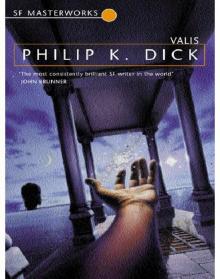 Valis
Valis The Simulacra
The Simulacra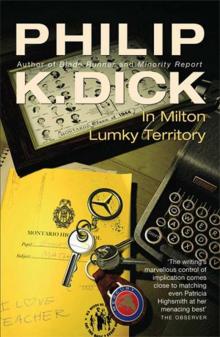 In Milton Lumky Territory
In Milton Lumky Territory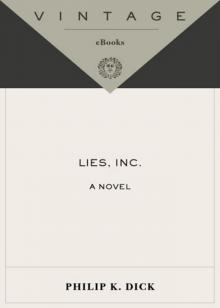 Lies, Inc.
Lies, Inc. The Man Who Japed
The Man Who Japed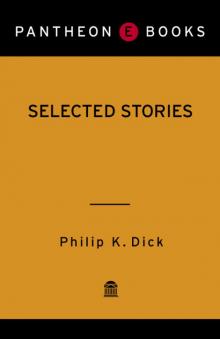 Selected Stories of Philip K. Dick
Selected Stories of Philip K. Dick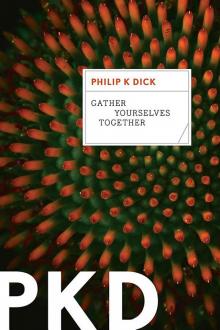 Gather Yourselves Together
Gather Yourselves Together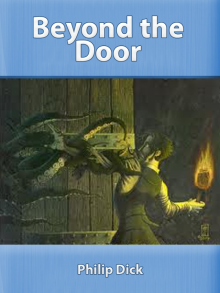 Beyond the Door
Beyond the Door Our Friends From Frolix 8
Our Friends From Frolix 8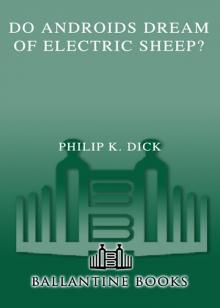 Do Androids Dream of Electric Sheep?
Do Androids Dream of Electric Sheep? The Short Happy Life of the Brown Oxford and Other Classic Stories
The Short Happy Life of the Brown Oxford and Other Classic Stories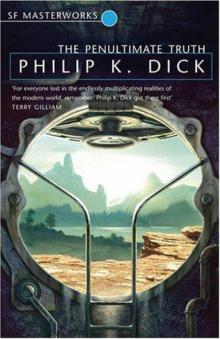 The Penultimate Truth
The Penultimate Truth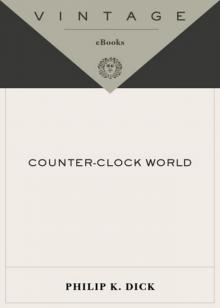 Counter-Clock World
Counter-Clock World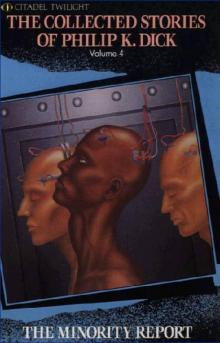 The Minority Report: 18 Classic Stories
The Minority Report: 18 Classic Stories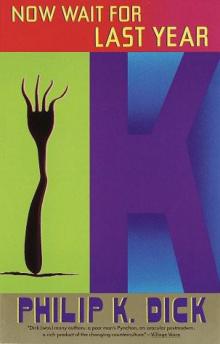 Now Wait for Last Year
Now Wait for Last Year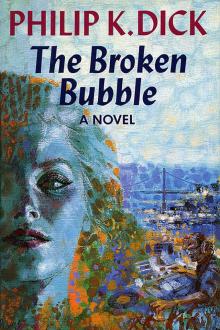 The Broken Bubble
The Broken Bubble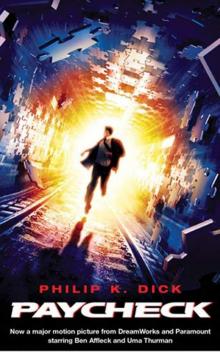 Paycheck
Paycheck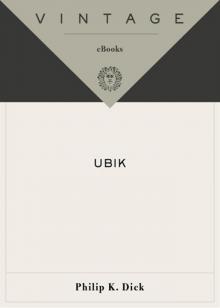 Ubik
Ubik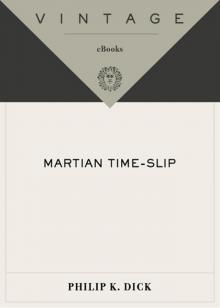 Martian Time-Slip
Martian Time-Slip The Shifting Realities of Philip K. Dick
The Shifting Realities of Philip K. Dick The Man Whose Teeth Were All Exactly Alike
The Man Whose Teeth Were All Exactly Alike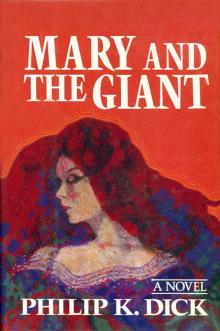 Mary and the Giant
Mary and the Giant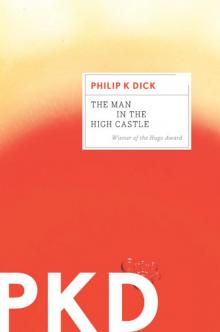 The Man in the High Castle
The Man in the High Castle Puttering About in a Small Land
Puttering About in a Small Land Confessions of a Crap Artist
Confessions of a Crap Artist Mr. Spaceship by Philip K. Dick, Science Fiction, Fantasy, Adventure
Mr. Spaceship by Philip K. Dick, Science Fiction, Fantasy, Adventure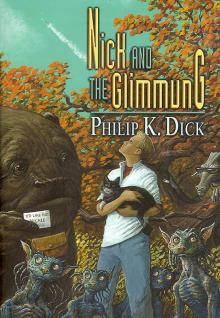 Nick and the Glimmung
Nick and the Glimmung Deus Irae
Deus Irae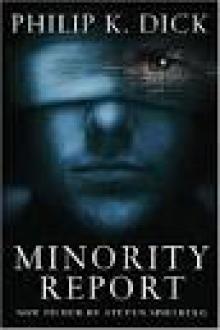 The Minority Report
The Minority Report The Hanging Stranger
The Hanging Stranger The Variable Man
The Variable Man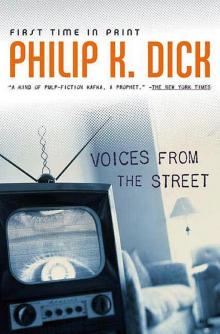 Voices From the Street
Voices From the Street Second Variety and Other Stories
Second Variety and Other Stories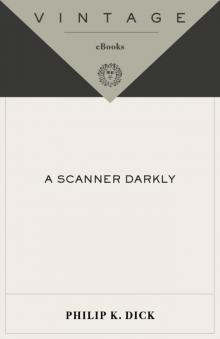 A Scanner Darkly
A Scanner Darkly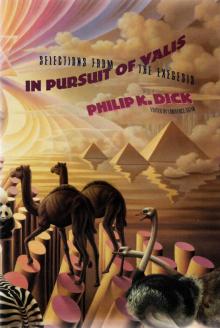 In Pursuit of Valis
In Pursuit of Valis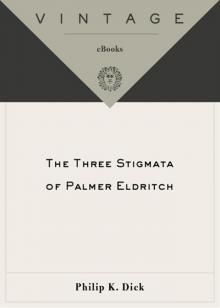 The Three Stigmata of Palmer Eldritch
The Three Stigmata of Palmer Eldritch The Transmigration of Timothy Archer
The Transmigration of Timothy Archer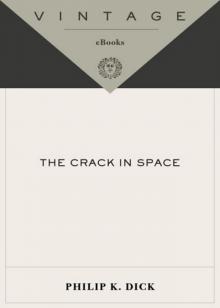 The Crack in Space
The Crack in Space The Collected Stories of Philip K. Dick 3: Second Variety
The Collected Stories of Philip K. Dick 3: Second Variety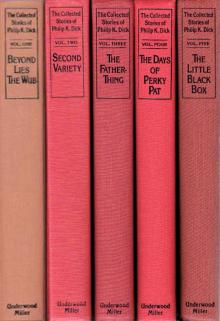 The Collected Stories of Philip K. Dick 4: The Minority Report
The Collected Stories of Philip K. Dick 4: The Minority Report The Skull
The Skull Solar Lottery
Solar Lottery Vulcan's Hammer
Vulcan's Hammer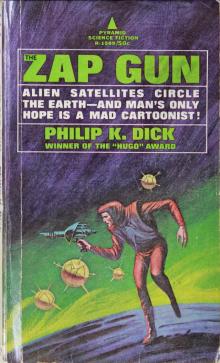 The Gun
The Gun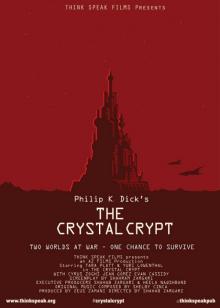 The Crystal Crypt
The Crystal Crypt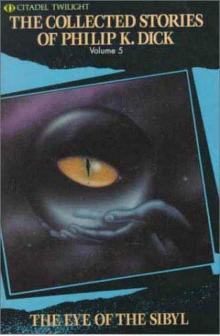 The Collected Stories of Philip K. Dick 5: The Eye of the Sibyl
The Collected Stories of Philip K. Dick 5: The Eye of the Sibyl Mr. Spaceship
Mr. Spaceship The Zap Gun
The Zap Gun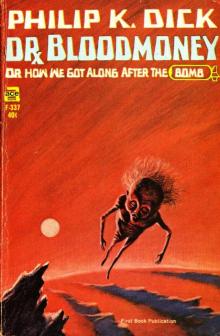 Dr. Bloodmoney
Dr. Bloodmoney Beyond Lies the Wub
Beyond Lies the Wub Galactic Pot-Healer
Galactic Pot-Healer The Divine Invasion
The Divine Invasion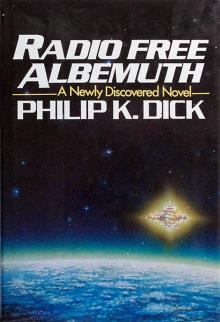 Radio Free Albemuth
Radio Free Albemuth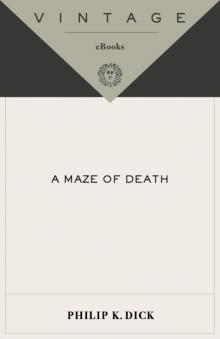 A Maze of Death
A Maze of Death The Ganymede Takeover
The Ganymede Takeover The Philip K. Dick Reader
The Philip K. Dick Reader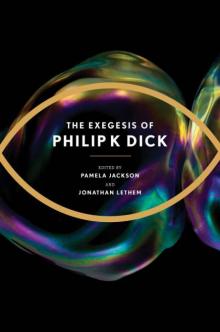 The Exegesis of Philip K. Dick
The Exegesis of Philip K. Dick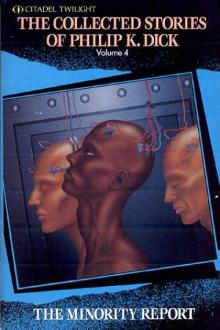 The Complete Stories of Philip K. Dick Vol. 4:
The Complete Stories of Philip K. Dick Vol. 4: Tony and the Beetles
Tony and the Beetles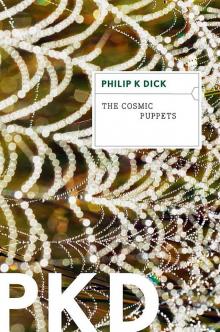 The Cosmic Puppets
The Cosmic Puppets The Complete Stories of Philip K. Dick Vol. 5: The Eye of the Sibyl and Other Classic Stories
The Complete Stories of Philip K. Dick Vol. 5: The Eye of the Sibyl and Other Classic Stories Clans of the Alphane Moon
Clans of the Alphane Moon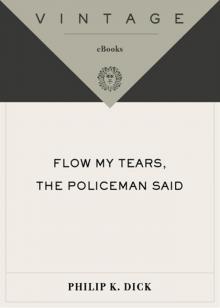 Flow My Tears, the Policeman Said
Flow My Tears, the Policeman Said The World Jones Made
The World Jones Made Total Recall
Total Recall Eye in the Sky
Eye in the Sky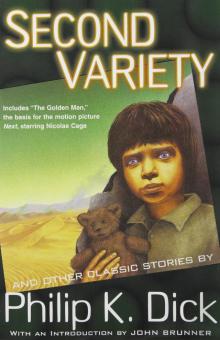 Second Variety
Second Variety Vintage PKD
Vintage PKD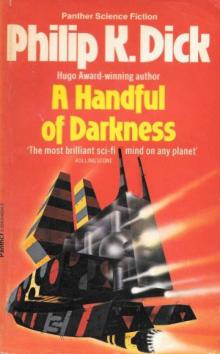 A Handful of Darkness
A Handful of Darkness Complete Stories 3 - Second Variety and Other Stories
Complete Stories 3 - Second Variety and Other Stories The Book of Philip K Dick
The Book of Philip K Dick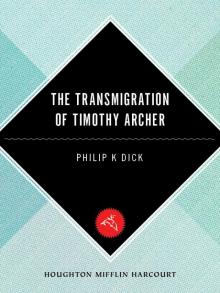 The Transmigration of Timothy Archer (Valis)
The Transmigration of Timothy Archer (Valis) Autofac
Autofac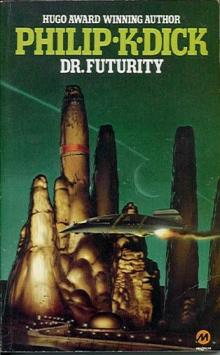 Dr. Futurity (1960)
Dr. Futurity (1960)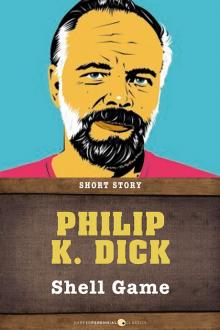 Shell Game
Shell Game The Minority Report and Other Classic Stories
The Minority Report and Other Classic Stories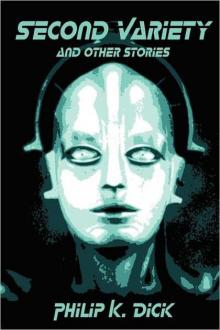 Collected Stories 2 - Second Variety and Other Classic Stories
Collected Stories 2 - Second Variety and Other Classic Stories The Third Time Travel
The Third Time Travel The Game-Players Of Titan
The Game-Players Of Titan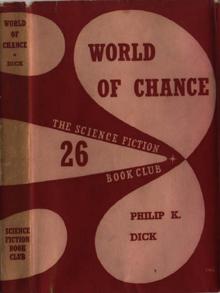 World of Chance
World of Chance The Shifting Realities of PK Dick
The Shifting Realities of PK Dick Adjustment Team
Adjustment Team The Demon at Agi Bridge and Other Japanese Tales (Translations from the Asian Classics)
The Demon at Agi Bridge and Other Japanese Tales (Translations from the Asian Classics) Collected Stories 3 - The Father-Thing and Other Classic Stories
Collected Stories 3 - The Father-Thing and Other Classic Stories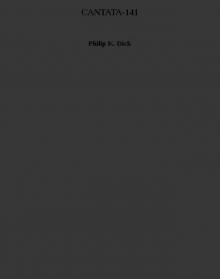 CANTATA-141
CANTATA-141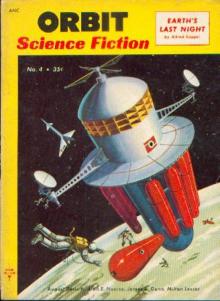 The Adjustment Team
The Adjustment Team The Collected Stories of Philip K Dick
The Collected Stories of Philip K Dick Electric Dreams
Electric Dreams Collected Stories 1 - The Short Happy Life of the Brown Oxford and Other Classic Stories
Collected Stories 1 - The Short Happy Life of the Brown Oxford and Other Classic Stories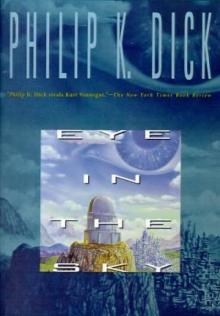 Eye in the Sky (1957)
Eye in the Sky (1957)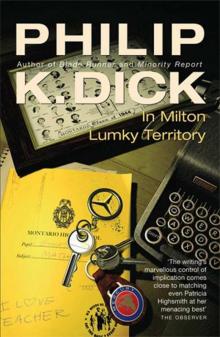 In Milton Lumky Territory (1984)
In Milton Lumky Territory (1984)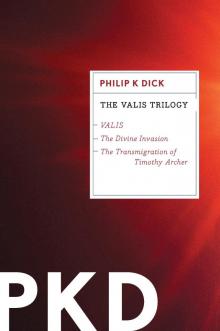 The VALIS Trilogy
The VALIS Trilogy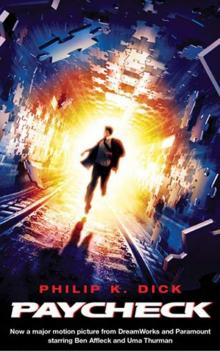 Paycheck (2003)
Paycheck (2003) The Unteleported Man
The Unteleported Man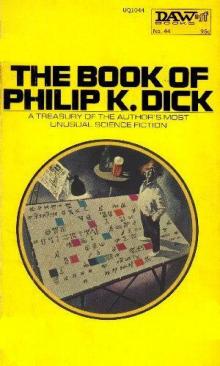 The Book of Philip K Dick (1973)
The Book of Philip K Dick (1973)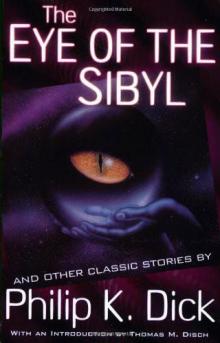 Collected Stories 5 - The Eye of the Sibyl and Other Classic Strories
Collected Stories 5 - The Eye of the Sibyl and Other Classic Strories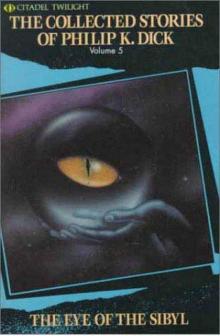 The Eye of the Sibyl and Other Classic Strories
The Eye of the Sibyl and Other Classic Strories The Crack in Space (1966)
The Crack in Space (1966)